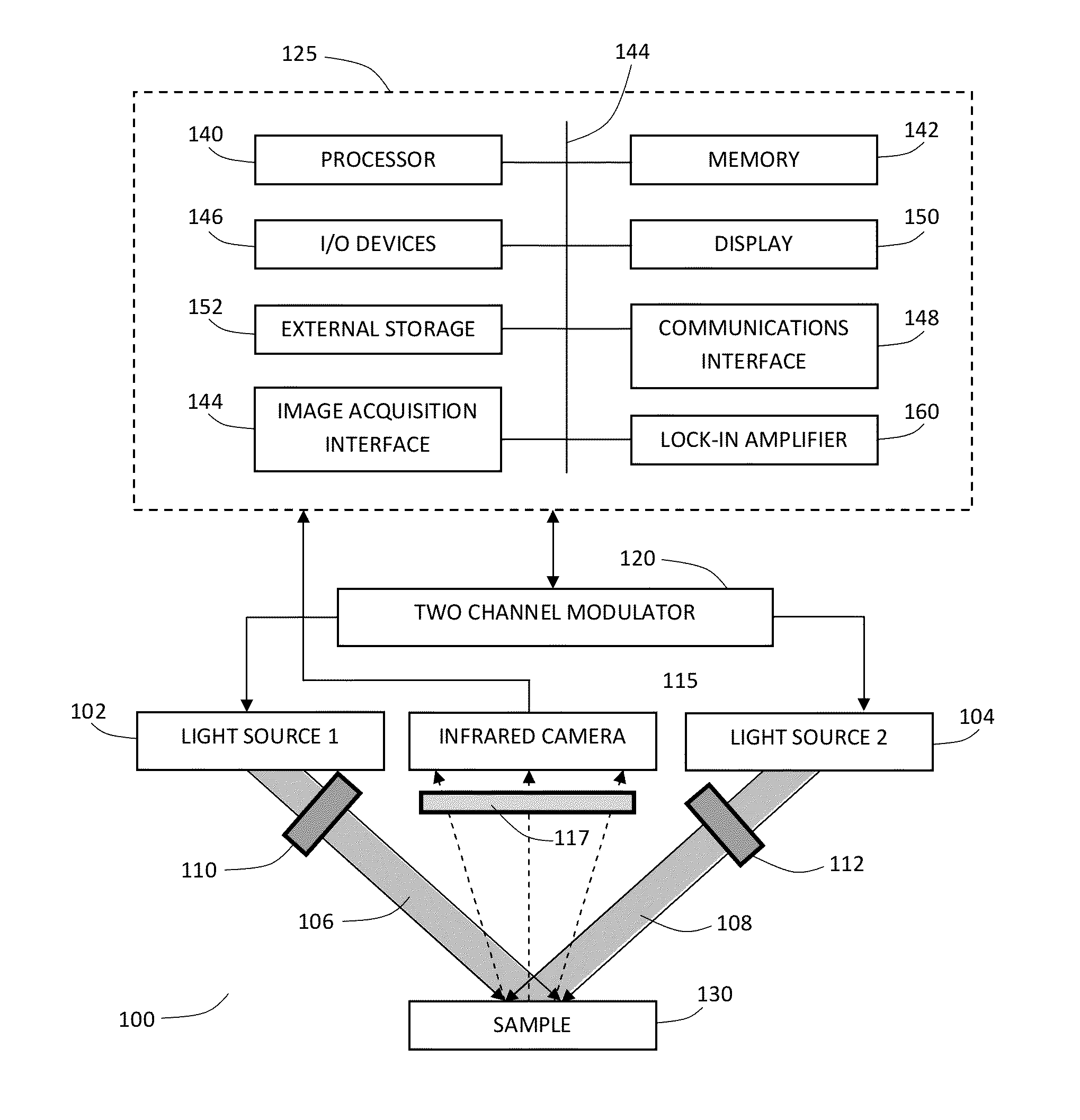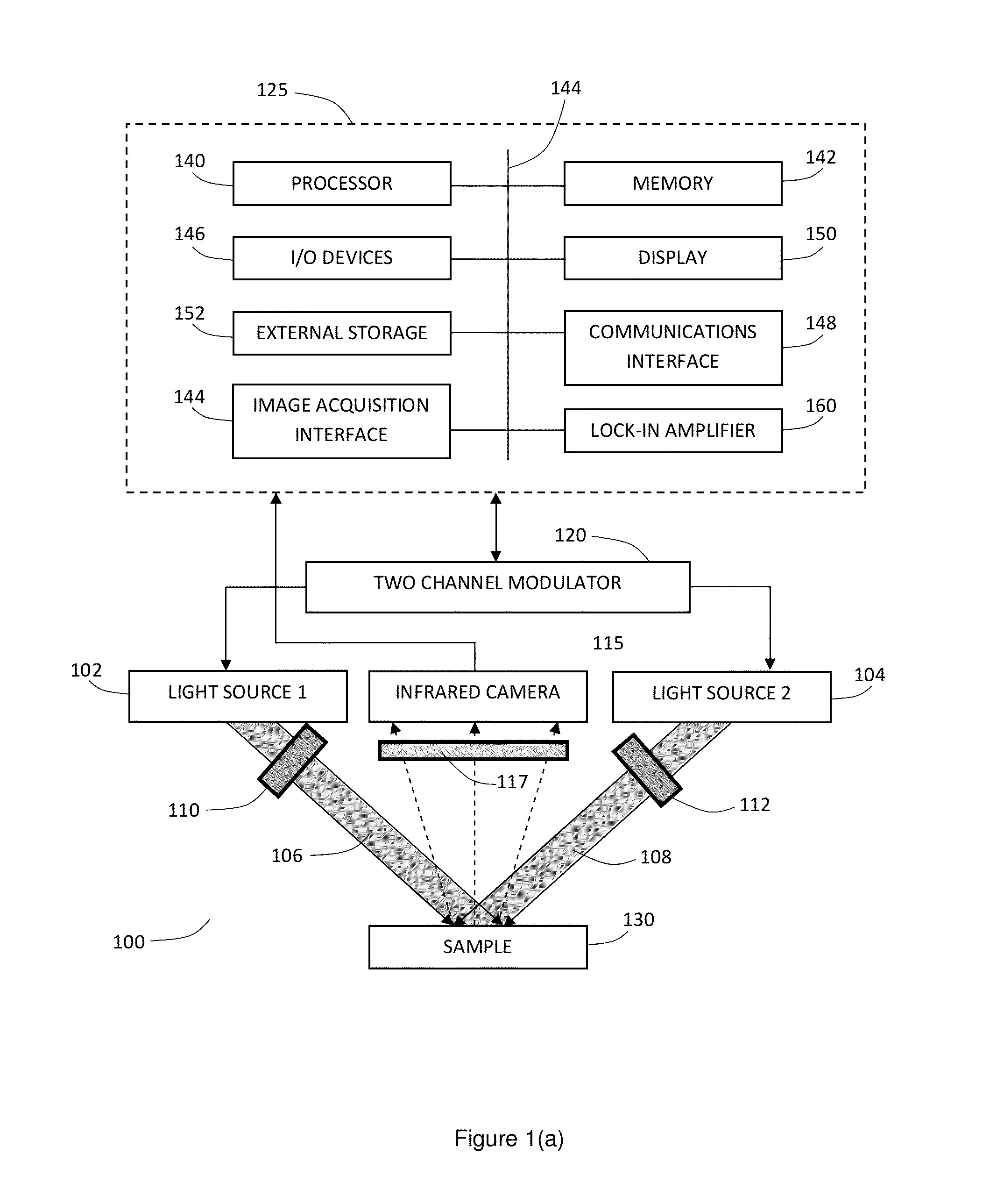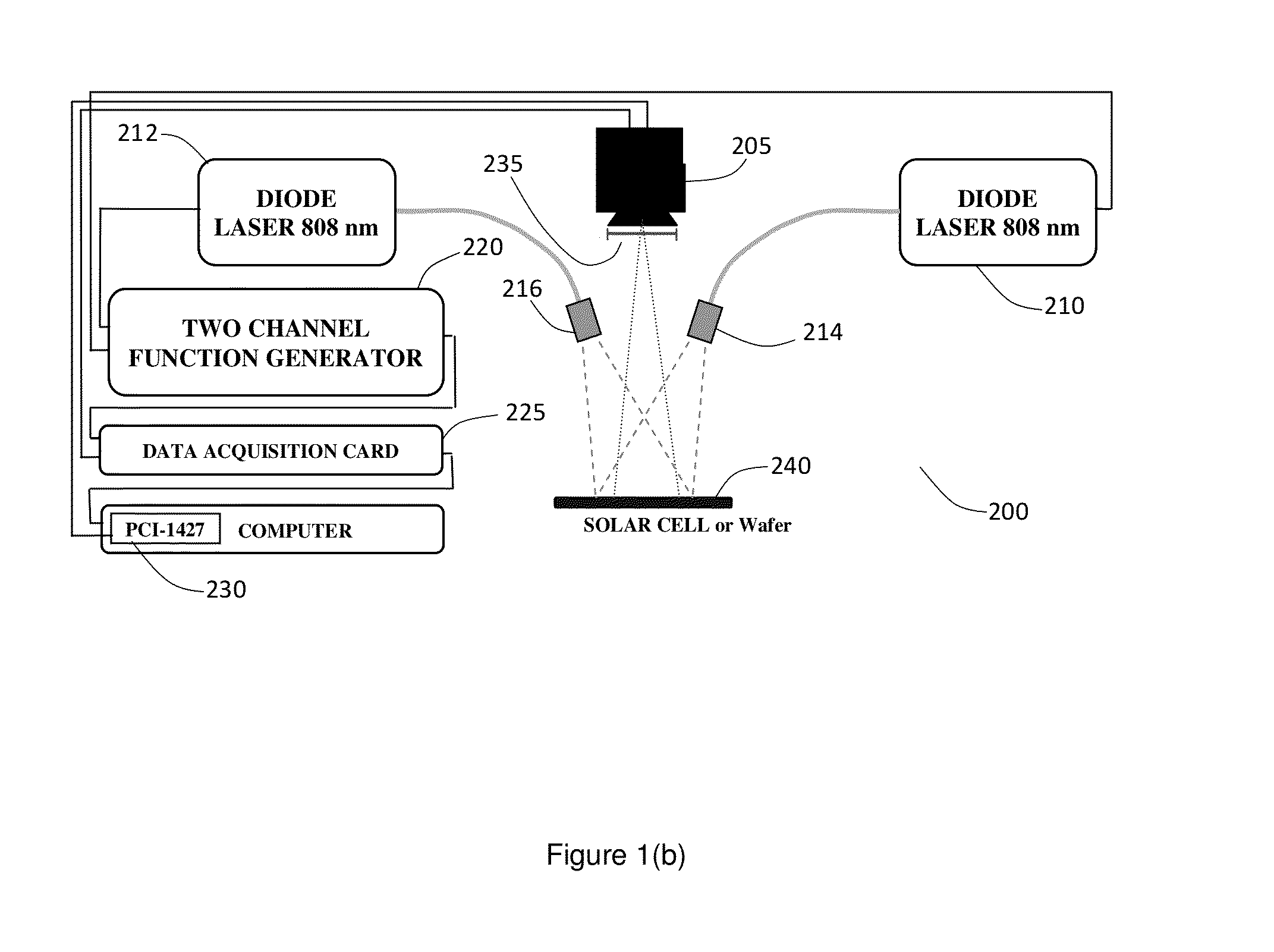Method and apparatus for performing heterodyne lock-in imaging and quantitative non-contact measurements of electrical properties
a heterodyne lock-in and electrical property technology, applied in the field of optical characterization of solar cells, can solve the problems of not meeting the needs of mass production, dc pl cannot monitor the optoelectronic carrier kinetics of surface and near-subsurface regions, and is much more time-consuming
- Summary
- Abstract
- Description
- Claims
- Application Information
AI Technical Summary
Benefits of technology
Problems solved by technology
Method used
Image
Examples
example 1
DC Photoluminescence, Direct and Heterodyne Lock-in Carrierography of a Multicrystalline Solar Cell and a Silicon Wafer
[0189]To highlight the features of lock-in HDC, compared to conventional optoelectronic imaging methods such as DC photoluminescence and direct LIC, experimental results with these imaging methods and heterodyne lock-in carrierography of multicrystalline Si solar cell of various dimensions are shown in FIGS. 7-10.
[0190]The apparatus 200 employed to perform the carrierographic measurements is shown in FIG. 1(b), and consisted of a high-speed NIR InGaAs snapshot camera 205 with windowing, two fiber coupled 808-nm 9-W diode lasers 210 and 212, optical blocks 214 and 216 with collimator and diffuser, a two-channel function generator 220, a data acquisition module 225 and a frame grabber 230. A long-pass filter 235 is used to prevent the excitation laser beams from interfering with the NIR camera 200.
[0191]The near infrared InGaAs camera employed (SU320KTSW-1.7RT / RS170 f...
example 2
Statistical Optoelectronic Quality Monitoring Method Via Lock-in Heterodyne Carrierography Imaging
[0204]Statistical distributions of direct and heterodyne lock-in amplitudes of two mc Si solar cells can be generated and are shown in FIG. 12. The statistical distribution was created by counting the number of pixels with amplitude within the range a and a+(bin size), that is proportional to the area of a solar cell or a substrate with pixel amplitudes within this range. The statistical distribution of the direct lock-in carrierography amplitude clearly shows the fraction of the area which does not generate photocurrent. This method of surface-integrated carrierographic amplitude (Sum of pixels) characterizes the optoelectronic quality of a solar cell. The statistical distribution heterodyne lock-in carrierography amplitude shows similar trends. However, the heterodyne carrierography images provide more features compared with the direct lock-in images as will be shown below.
example 3
Correlation Between Heterodyne Lock-in Image and Lifetime Map of MC Silicon Solar Cell
[0205]It follows from the foregoing theory (Eqs. 9, 11, 23, 24, 29, 30) that the heterodyne signal depends on the transport parameters of a solar cell as well as the nonlinearity coefficient γ. The most important transport parameter is the bulk recombination lifetime. For experimental confirmation of this correlation, the same fragment of a solar cell was measured with the help of a conventional technique: A map of recombination lifetimes was generated using the microwave reflectance PCD (μ-PCD) technique with a Semilab WT2000 system and is shown in FIG. 15.
[0206]The 10-Hz direct lock-in and heterodyne lock-in carrierographic images of the same area are shown in FIG. 16 and FIG. 17, respectively.
[0207]It is seen that lower-frequency carrierographic amplitude images correlate with the lifetime map. Areas with higher amplitude correspond to areas with higher recombination lifetime. The HDC images sho...
PUM
 Login to View More
Login to View More Abstract
Description
Claims
Application Information
 Login to View More
Login to View More - R&D
- Intellectual Property
- Life Sciences
- Materials
- Tech Scout
- Unparalleled Data Quality
- Higher Quality Content
- 60% Fewer Hallucinations
Browse by: Latest US Patents, China's latest patents, Technical Efficacy Thesaurus, Application Domain, Technology Topic, Popular Technical Reports.
© 2025 PatSnap. All rights reserved.Legal|Privacy policy|Modern Slavery Act Transparency Statement|Sitemap|About US| Contact US: help@patsnap.com



